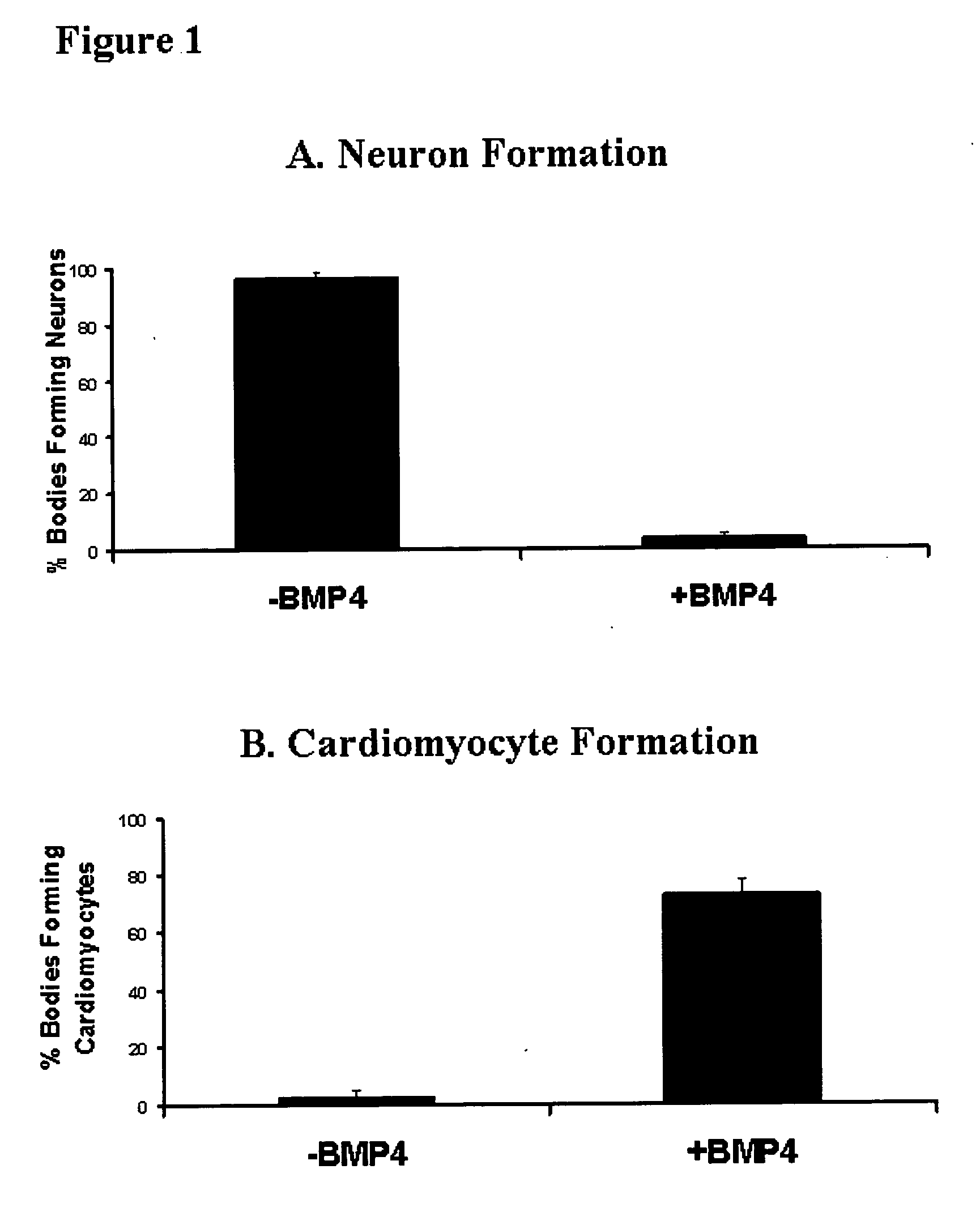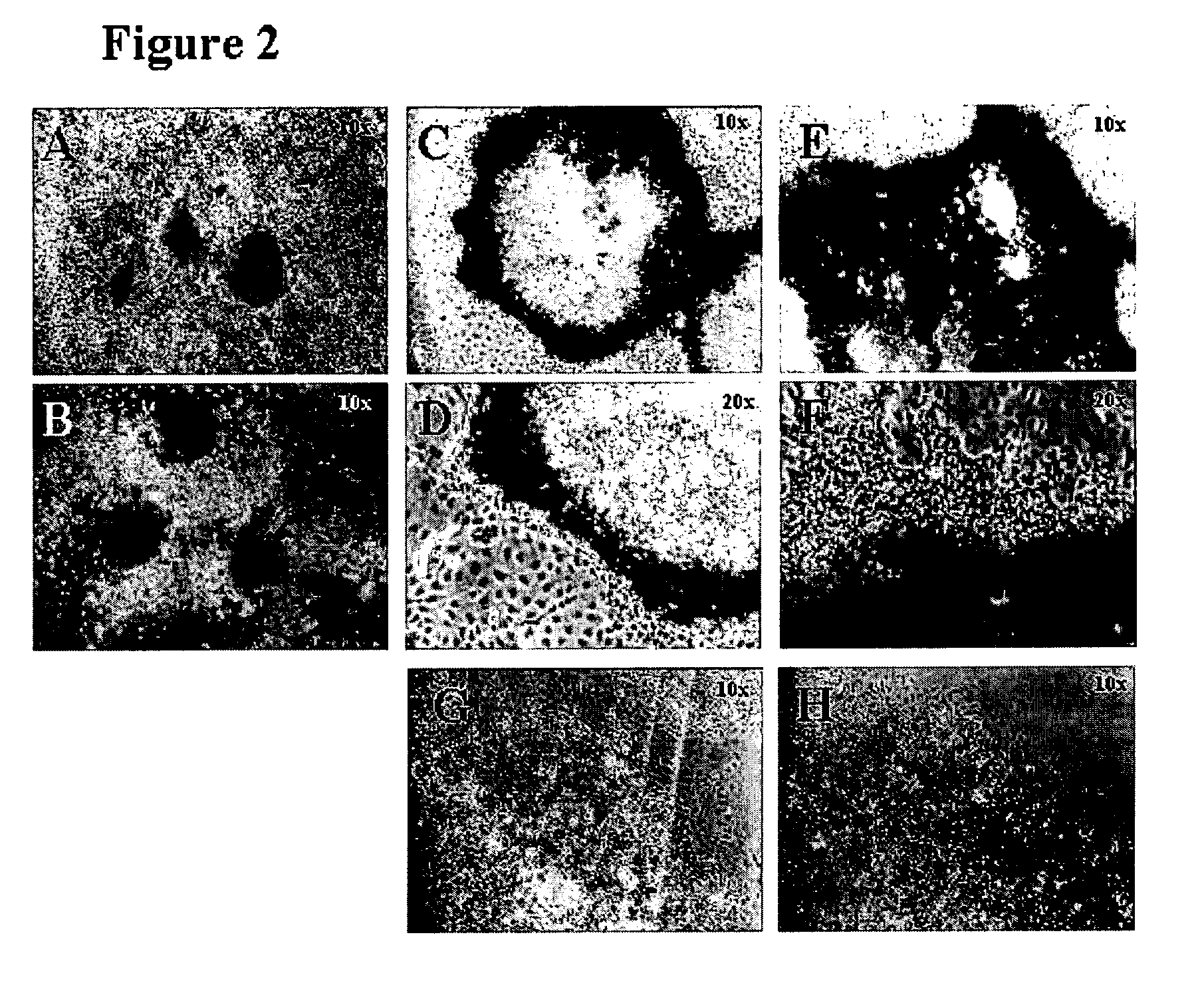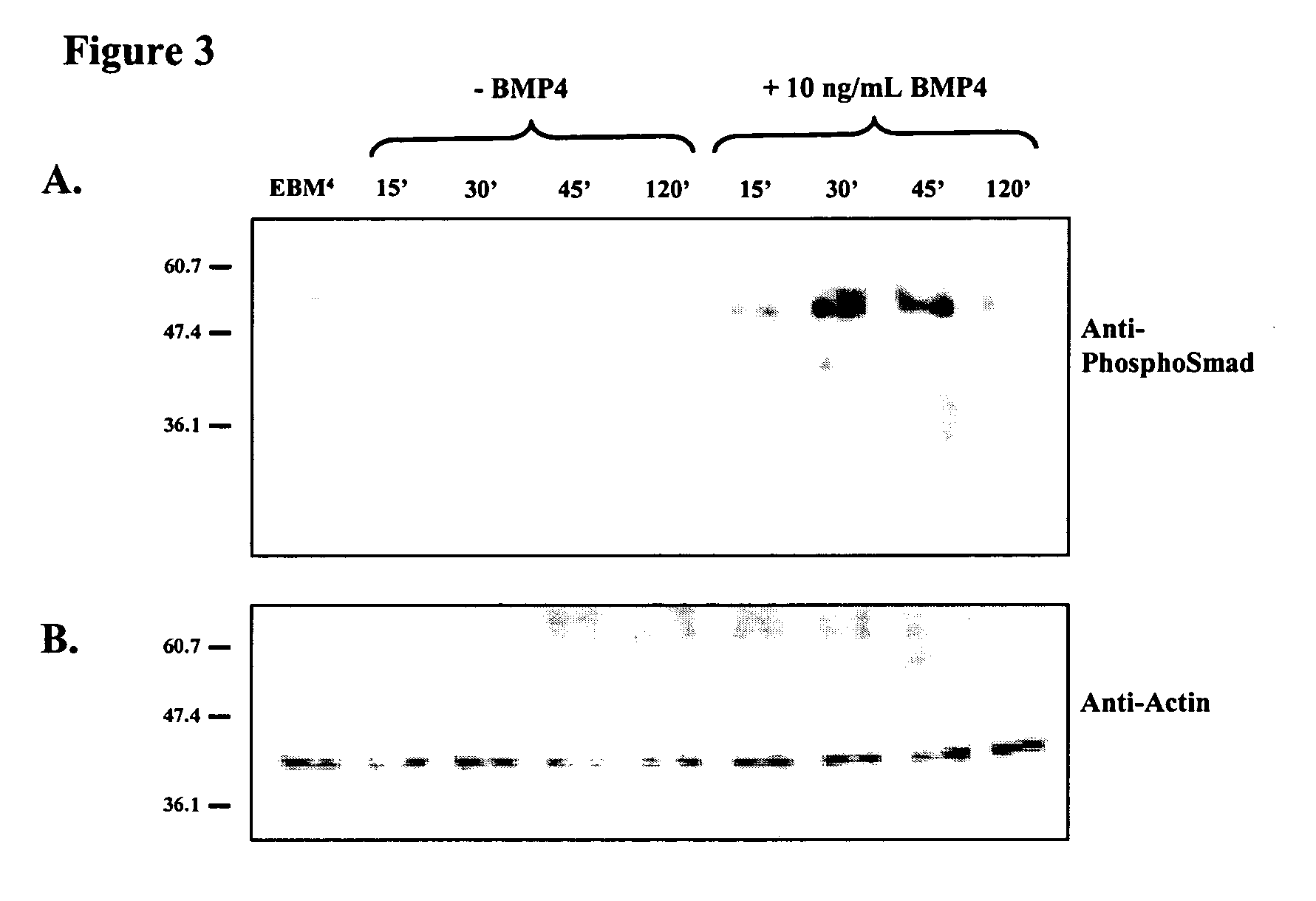Method for the preparation of cells of mesodermal lineage
a technology of mesodermal lineage and cell lineage, which is applied in the direction of hepatocytes, skeletal/connective tissue cells, and embryonic cells, etc., can solve the problem of little information about biological molecules that can indu
- Summary
- Abstract
- Description
- Claims
- Application Information
AI Technical Summary
Benefits of technology
Problems solved by technology
Method used
Image
Examples
example 1
[0102] Cell Culture
[0103] Feeder independent ES cell line D3 (Doetschman et al., Journal of Embryology and Experimental Morphology 87: 27-45, 1985) was used in this study. Routine maintenance of ES cells and the formation of EPL cells were performed as outlined in Smith et al., Dev. Biol. 151: 339-51, 1992 and Rathjen et al., Journal of Cell Science 112 (Pt 3): 601-12, 1999.
[0104] MEDII was produced as described in Rathjen et al., 1999, supra. Briefly, HepG2 cells (Knowles et al., Science 209: 497-499, 1980; ATCC HB-8065) were trypsinised to a single cell or near single cell suspension and seeded at 5.times.10.sup.4 cells / cm.sup.2 in DMEM (Gibco BRL #12800) supplemented with 10% v / v fetal calf serum (FCS; Commonwealth Serum Laboratories) to give a ratio of 1.75.times.10.sup.5 cells / ml medium. Conditioned medium was collected after 4 days culture, sterilised by filtration through a 22 .mu.m membrane and supplemented with 0.1 mM .beta.-mercaptoethanol (.beta.-ME) before use. MEDII was...
example 2
[0106] Differentiation Assays
[0107] EBM were aggregated and cultured for 3.5 days before being seeded individually into 2 ml wells of gelatin-treated (0.2% w / v gelatin in PBS for at least 30 minutes) tissue culture plastic in 50% MEDII. EBMs were allowed to adhere for 12 hours before the culture medium was removed and the aggregates were washed with PBS. The media was then replaced with a defined serum free medium [50% v / v DMEM, 50% v / v Hams F12 (Gibco BRL #11765) supplemented with 1.times.ITSS supplement (Boehringer Mannhiem)], with or without the addition of 10 ng / ml BMP4 (R&D Systems). Thus aggregates were exposed to BMP4 as EBM.sup.4. Aggregates were cultured until day 10 to 12 before being assessed for the presence of neural extensions or rhythmic contractions of cardiomyocytes, both identified by morphological critera. For each trial the percentage of aggregates showing neuron or cardiomyocyte formation was compared between those grown with and without 10 ng / ml BMP4. There wer...
example 3
[0108] In Situ Hybridization Analysis
[0109] EBMs were aggregated and cultured for 3.5 days before being seeded as described above. The aggregates were grown for a further 2 days after the addition of serum free media with or without 10 ng / ml BMP4. They were then fixed with 4% w / v Paraformaldehyde in PBS for 15 minutes, before being dehydrated in 50% v / v ethanol in water for 15 minutes followed by 70% v / v ethanol in water. They were stored as seeded aggregates in 70% v / v ethanol in water at -20 .degree. C. until analysis. Prior to analysis aggregates were rehydrated to PBS with 0.1% v / v Tween through a wash in 50% v / v ethanol in water. Wholemount in situ hybridization analysis was performed as described in Lake et al., J. Cell. Sci 113 (Pt3): 555-566, 2000. Probes used were Oct4 (Rathjen et al., supra 1999) and brachyury (Lake et al., 2000 supra).
PUM
| Property | Measurement | Unit |
|---|---|---|
| time | aaaaa | aaaaa |
| wavelength | aaaaa | aaaaa |
| pH | aaaaa | aaaaa |
Abstract
Description
Claims
Application Information
 Login to View More
Login to View More - R&D
- Intellectual Property
- Life Sciences
- Materials
- Tech Scout
- Unparalleled Data Quality
- Higher Quality Content
- 60% Fewer Hallucinations
Browse by: Latest US Patents, China's latest patents, Technical Efficacy Thesaurus, Application Domain, Technology Topic, Popular Technical Reports.
© 2025 PatSnap. All rights reserved.Legal|Privacy policy|Modern Slavery Act Transparency Statement|Sitemap|About US| Contact US: help@patsnap.com



